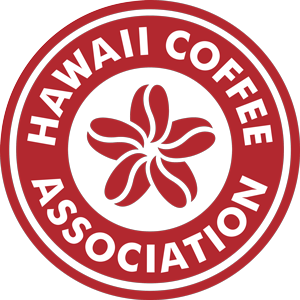What’s at Stake: The Loss of Hawaii’s Coffee Industry, A Major Economic Driver
As growers of the #2 crop in the State, we are just under 1,500 strong who tend more than 10,000 (i) acres. The value of our coffee is second only to Hawaii’s seed crops . For the 2019-2020 season, Hawaii’s unroasted coffee was valued at $102.91 million (ii), while its roasted value was more than (iii) $148.48 million .
Now, we’re facing the most destructive coffee disease in the world: Coffee Leaf Rust (CLR), a fungus that can kill an entire farm in a matter of weeks. Annually, CLR causes $3 billion in damage and lost income around the world.
In Hawaii, the stakes are higher than elsewhere. While most other coffee-growing regions have planted rust-resistant varieties, all of the ones commercially grown in Hawaii are not resistant. And the best fungicides used to fight this disease have not been approved here.
CLR has been found and is spreading rapidly on Hawaii Island, Maui, Oahu and Lanai. Its spores are spread by wind, workers, rain, equipment and tourists. As a result, farmers are facing defoliation and a loss of yield up to 70% or more.
To help save our industry, as well as the communities and families that depend on it, we need State, Federal and private support and we need it NOW.
Without action, we stand to lose hundreds of millions of dollars in Hawaii’s economy – a contribution that far exceeds the value of the beans themselves. To grow our coffee, we hire thousands of workers and buy from local industries such as transportation and vendors of agricultural supplies. This so-called “downstream economic impact” is valued at about $211 (iv) million.
Then there is the “upstream economic impact” of Hawaiian coffee, which is unquantified. Compared to most other crops grown here, coffee offers two advantages: 1) Its worldwide popularity boosts the tourism potential of events such as the Kona Coffee Festival. 2) It is shelf stable. That makes Hawaiian coffee a major attraction for the souvenir market, drawing tourists to shops, cafes and agritourism operations statewide. In turn, these visitors create more worldwide demand for Hawaiian coffee once they return home. For example, foreign exports of coffee from Hawaii, valued at $9.20 million (v) in 2019, are an ongoing international advertisement for the Hawaii islands.
The economic losses from CLR would have an outsized impact in rural areas, where few other industries exist. Remember the collapse of the local sugar industry? We can expect similar results: dramatically increasing unemployment – especially of historically underserved and minority populations – accompanied by increasing crime and drug use. Not to mention the harm to almost 200 years of coffee-growing history and the cultural heritage of our islands.
What We Need:
• Statewide approval of the most effective CLR fungicides, and subsidies for famers to purchase them.
• Support for development of the best CLR-management strategies in Hawaii, as well as support to educate farmers of them.
• Support for research of the best CLR resistant varieties that will maintain the quality of Hawaii coffees. Also support for the importation, propagation and distribution of CLR- resistant varieties, including expanded plant-quarantine facilities. (This is a 5-10 year project.)
• Support for farmers to replace their existing fields with rust-resistant varieties.
• Support for other ways to build capacity and resilience within farm communities.
Contact:
• Chris Manfredi, President, Hawaii Coffee Association president@hawaiicoffeeassoc.org
• Suzanne Shriner, Administrator, Synergistic Hawaii Ag Council suzanne@shachawaii.org
_______________________
i $54.3 million for Coffee vs $109.5 million for Seed Crops (including seed corn), in 2019. Source: State of HI, HDOA Market Analysis and News Branch “Top 20 Agricultural Commodities Produced: State of Hawaii, 2019.”
ii 2019-2020 season, pounds of utilized production (green beans) x price per pound: 5,120,000 pounds x $20.10/pound = $102.91 million. Source: USDA-NASS. Jan 2021. “Coffee”. https://www.nass.usda.gov/Statistics_by_State/Hawaii/Publications/Fruits_and_Nuts/Coffee -01-26-2021.pdf
iii This is a wholesale roasted estimate of the value of the 2019-2020 season crop, priced at $29.00 per pound: 5,120,000 pounds x $29.00/pound = $148.48 million. The $29.00/pound is an average statewide value that takes into account the lower wholesale prices of mechanically harvested coffee (Kauai, Oahu and Maui beans) and the higher prices of hand-harvested beans (Kona, Ka‘u).
iv Using multiplier of 2.05, applied to the 2019-2020 season value of the State’s green beans: $102.91 million x 2.05 = $210.97 million. Multiplier from correspondence between HDOA chair P. Shimabuku and USDA Secretary S. Perdue, dated November 19, 2020.
v $5.33 million in roasted coffee from Hawaii + $3.87 million in unroasted coffee from Hawaii. Source: USDA Global Agricultural Trade System. 2019 data.
